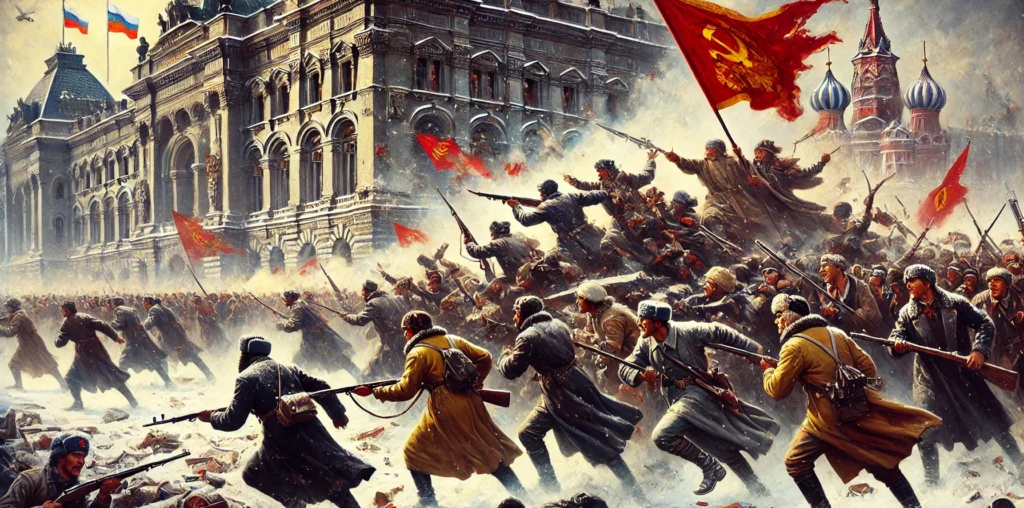Background: In 1917, Russia was in turmoil due to World War I, economic hardship, and dissatisfaction with the monarchy. The February Revolution had already led to the abdication of Tsar Nicholas II, and a provisional government was established, but it struggled to maintain control.
What Happened: The October Revolution, also known as the Bolshevik Revolution, took place on October 25, 1917 (Julian calendar, which corresponds to November 7 on the Gregorian calendar). It was the second major revolution in Russia that year, following the February Revolution, which had led to the abdication of Tsar Nicholas II and the establishment of a Provisional Government. Despite the Provisional Government’s efforts to introduce reforms, it struggled to maintain stability amidst ongoing economic problems, widespread discontent, and Russia’s continued involvement in World War I. The Bolsheviks, led by Vladimir Lenin, seized on the public dissatisfaction with the Provisional Government. They promised “peace, land, and bread” to the war-weary soldiers, peasants, and workers, gaining widespread support. On the night of October 25, the Bolsheviks launched an armed insurrection against the Provisional Government in Petrograd (now St. Petersburg). With the help of the Red Guards, a paramilitary group loyal to the Bolsheviks, they quickly took control of key government institutions, including the Winter Palace, which served as the headquarters of the Provisional Government. By the end of the day, the Provisional Government had been overthrown, and the Bolsheviks had seized power. The revolution marked the beginning of a new socialist government in Russia, led by the Bolsheviks, who would later become the Communist Party. It also set the stage for the Russian Civil War, which would rage for several years as various factions fought for control of the country.
Impact for the Future: The October Revolution led to the establishment of the Soviet Union, the world’s first socialist state. The Bolsheviks’ success inspired communist movements worldwide, leading to the spread of socialist ideologies and the eventual Cold War rivalry between the U.S. and the Soviet Union. The revolution’s impact on global politics, economics, and ideologies can still be felt today, as it shaped much of the 20th-century geopolitical landscape.

